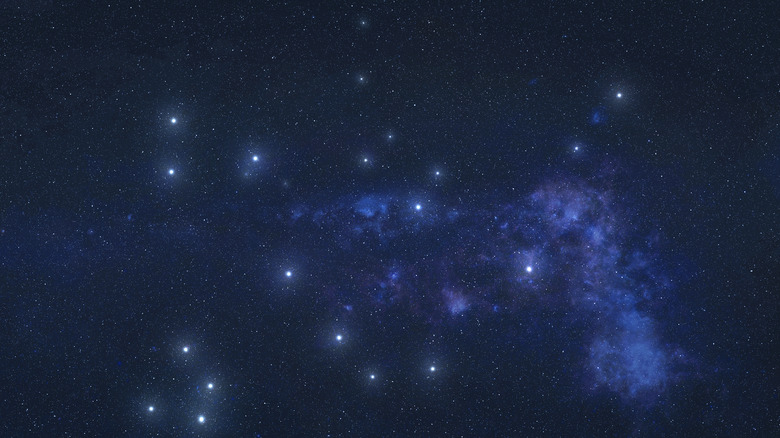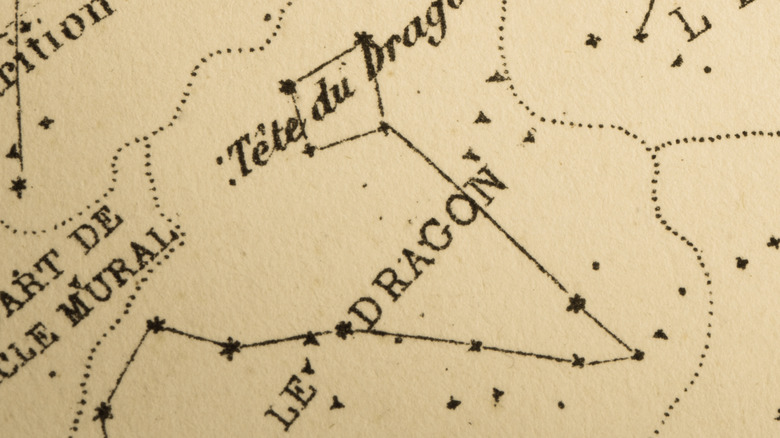The Mythology Behind The Draco Constellation Explained
The sky is a fascinating thing to observe, especially on a crystal clear night. There are so many stars and planets to look at. The ancients also found it entertaining to observe. Back then, they didn't have anything like the internet and streaming, or even electrical power. They had to make do with their imaginations. So they looked up at the sky and noticed that some stars had patterns and could seem to look like anything from a mighty hunter to different animals. These were the constellations. Not content to just imagine those patterns, they came up with stories, as well (via Sciencing).
Those tales were fantastical, ranging from a woman being saved from being eaten by a giant sea creature to a god who poured water down on the Earth below in the form of rain. Most of the time, these were myths that had one version (though some had slight variations). That way, they could visualize what happened while gazing at the constellation.
When it comes to the constellation Draco, however, there are several myths to choose from.
Draco is a dragon immortalized in a humiliating situation
Per Constellation Guide, the main myth was Greek, about one of the labors of Hercules. He had to get golden apples from a tree — but not just any tree. It belonged to Hera, who already had it out for the demigod. Hercules had to contend with a dragon named Ladon. The way the myths differ is what the dragon looked like and where he came from. One version described him having 100 heads, the offspring of Typhon and Echidna. Another story made him the product of two gods of the seas and, presumably, with only one head.
Hercules completed his task by using a poison arrow to fell the dragon and then taking the apples. Hera was upset at the death of Ladon and commemorated him by putting him up in the sky. The constellation shows Hercules with his foot on the head of the dragon. Poor dragon, having to lay there with someone's foot on his head for eternity. Apparently Hera didn't mind that indignity.
There was also a Roman myth in which Draco was a Titan who fought against the gods of Olympus. He was killed by Minerva, the Romans' equivalent of the Greeks' Athena, who threw him into the sky, where he froze around the North Pole. Whichever myth you like, it still makes for great nighttime stargazing.

